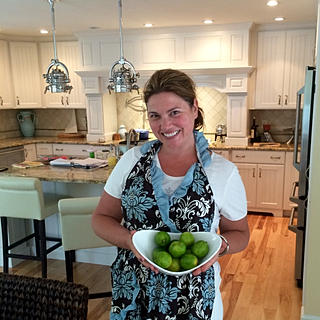Wiener Schnitzel. Bust Out Your Lederhosen and Dig In.
- Tricia Cohen
- Sep 9, 2017
- 3 min read
Updated: Dec 18, 2022

The name schnitzel translates in the style of Vienna. Therefore, it is the National Dish of Austria. Like many other beloved national traditions around the world (for example, Burgundy, Champagne, Scotch), Austria has a law protecting the phrase Wiener Schnitzel. The law states explicitly that any use of the word schnitzel must describe a meal made from veal.
The origin of Schnitzel is not Austrian, German, or Swiss. The concept is Roman, possibly as early as the first century BC, by the gourmand Apicus. However, there is quite a culinary quarrel between a family that is both Austrian and Italian, going back to 1134. Both sides of the family claim credit for the dish, and the Italian side goes as far as to state that they once served the dish at a banquet in 1134 in Milan. The dish in Italy is Cotoletta Alla Milanese, and there are documents dating from 1148 mentioning “Lumbolos cum panitio” (little chops with breadcrumbs). The main difference between the two dishes is the Austrian version is boneless, while the Italian serves it with the bone.
The story of Wiener Schnitzel reads like a good drama. You have the account of the family fighting over this culinary delight and the fascinating story of Austrian General Joseph Radetsky von Radetz. According to lore, von Radetz received word of this tasty veal steak from Adjunant to the Emporer, Count Attems. Von Radetz spent time in Milan around 1857, fell in love with the dish the Count had mentioned, and brought it back to his homeland as a National Treasure. Upon his return, Emporer Franz Joseph I of Austria requested his recipe. A delightful tale to explain the dish's origin, yet the story appears to be just that, a story. In 2007, linguist Heinz Dieter Pohl declared that this story could not be accurate. According to Pohl, Weiner Schnitzel’s connection with Radetzky is in 1969 from an Italian gastronomy book, and before this time, the story was unknown in Austria. Further, no such Count existed around that time with that name.
Many stories talk about the origin of Weiner Schnitzel, even as early as the 7th century. One, if not the oldest, operating restaurant in the world serves this on its beautifully crafted menu. The restaurant in Salzburg, St. Peter Stiftskeller, opened in 803. Whatever the story, this dish is delicious. Made with veal slices, butterflied, seasoned, rolled in flour, dipped in eggs, and a gentle coat of breadcrumbs. No need to press the breadcrumbs into the meat as they will need to stay somewhat dry to puff up during the cooking process. It is traditionally served with Kopfsalat (lettuce with a sweet vinaigrette), potatoes, and lemon slices.
My favorite reference to Schnitzel comes from 1965 in the epic film, The Sound of Music, which was set in Salzburg. A song from the beloved movie, My Favorite Things reference schnitzel with noodles. Go ahead; take a minute to sing it; I did…
Raindrops on roses and whiskers on kittens
Bright copper kettles and warm woolen mittens
Brown paper packages tied up with strings
These are a few of my favorite things
Cream-colored ponies and crisp apple strudels
Doorbells and sleigh bells and schnitzel with noodles
Wild geese that fly with the moon on their wings
These are a few of my favorite things
Girls in white dresses with blue satin sashes
Snowflakes that stay on my nose and eyelashes
Silver white winters that melt into springs
These are a few of my favorite things
When the dog bites
When the bee stings
When I’m feeling sad
I simply remember my favorite things
And then I don’t feel so bad









コメント